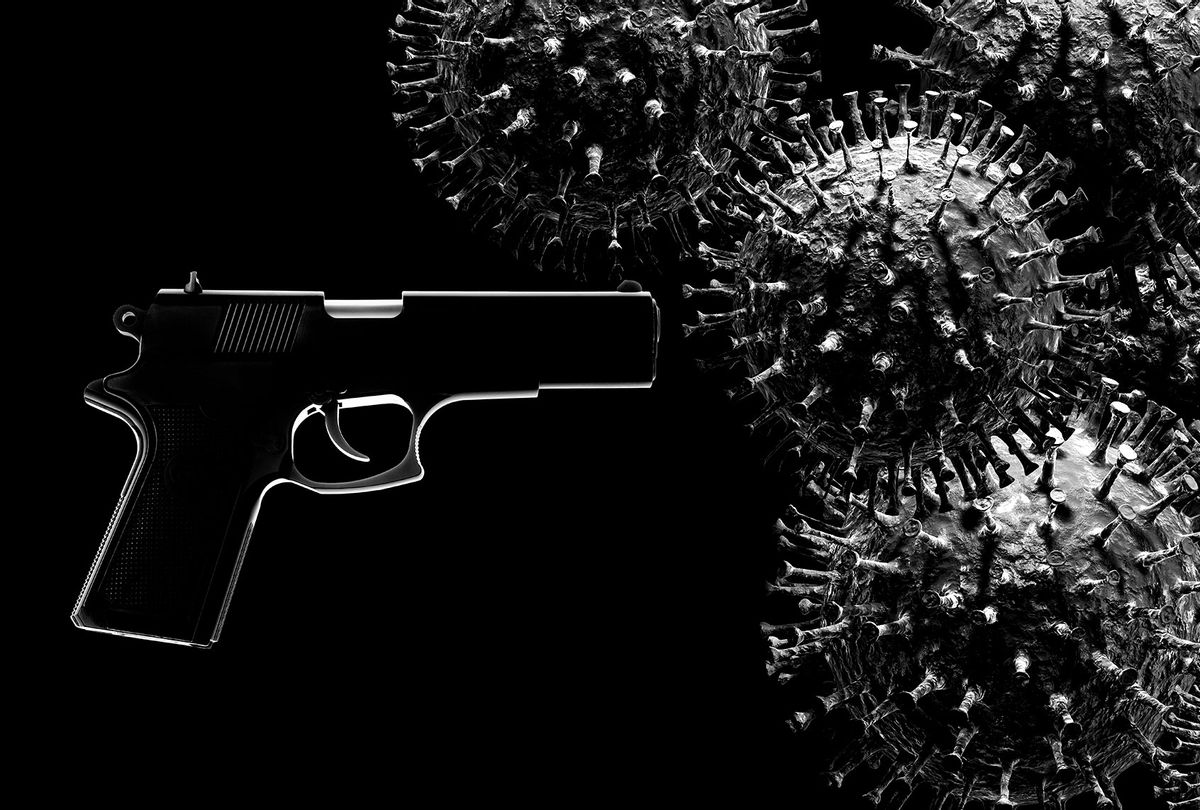One of the more confounding aspects of a deadly, life altering pandemic for many Americans was its effect on one seemingly unrelated trend: a harsh spike in gun violence that has plagued the country and only seems to be getting worse.
Right-wing media has been quick to blame cultural factors for the surge in deaths — namely, a racial justice protest movement that began last summer and counts police reform as one of its primary goals. But reality is often more complicated.
That seems to be the conclusion of a recent paper published in the journal Scientific Reports. Researchers from Penn State — who were careful to emphasize that they are merely noting statistical trends and not definitively identifying causes — found that gun violence in the United States increased by more than 30% during the COVID-19 pandemic. The authors learned this by analyzing daily police reports of gun-related deaths and injuries in all 50 states and Washington, D.C. from March 1, 2020 to March 31, 2021.
In addition to finding a national jump of more than one-quarter, they also discovered significant increases in gun violence in 28 states. Only one state, Alaska, saw a significant drop.
In places like Michigan, Minnesota and New York, however, gun violence soared more than 100% over the previous year.
Want more health and science stories in your inbox? Subscribe to Salon's weekly newsletter The Vulgar Scientist.
The scientists point to several factors that they suspect may have led to this increase.
They hypothesized that suicide rates would go up due to rising unemployment and the loss of important forms of social support, while violent crimes would likewise increase due to these factors, as well as subsequent increases in substance abuse, idle time and/or financial stress.
Further elevating the risk of gun violence was the increased availability of firearms — statistics indicate gun sales experienced a boost once people needed to stay at home. The National Instant Criminal Background Check System revealed a 41% increase in handguns sold in March 2020 compared to the same period in 2019. Studies have consistently found people are more likely to commit suicide or homicide if they have access to guns.
"Although our study was not framed to explore the mechanisms and specific risk factors that caused the increased rate of gun violence, the COVID-19 pandemic has been associated with psychological distress caused by the shelter-in-place orders, increased rates of domestic violence, disruption of social networks, unemployment, and record increases in gun sales and access to guns during the pandemic," Dr. Paddy Ssentongo, assistant professor at the Penn State Center for Neural Engineering, told Salon by email. "All these factors are plausible reasons for the observed increase. Furthermore, it is well-established that access to firearms is a risk factor for gun-related suicide and homicide."
Ssentongo added that this means the cause of reducing gun violence is linked to the cause of reducing COVID-19 fatalities and casualties. He noted that interventions like vaccinations and mask-wearing, by mitigating the COVID-19 pandemic, may have a similar effect on "the downstream effects" of that pandemic.
Notably, the study only found a "relatively weak" link between COVID-19 cases and gun violence when the statistics were adjusted for mean age, population, gender proportion and lockdown orders. (The correlation increased without those controls.)
It seems that the increase in gun violence, if it is a product of the COVID-19 era, is due to the social consequences of the outbreak rather than the disease itself.
"While stay-at-home orders and social distancing measures are vital to contain the spread of COVID 19, we also need to be aware of the unintended social and economic stressors that may lead to gun violence," the authors write.



Shares